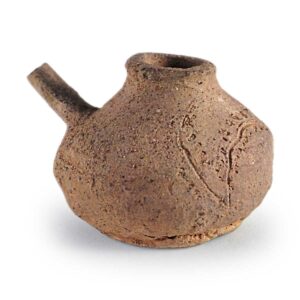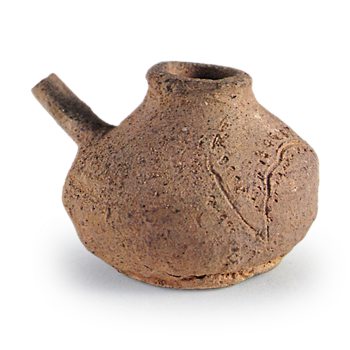
This is the water inlet of an inkstone. It is also called an inkstone droplet, water temperature, or under-water basin. In China, inkstones were first made of copper and later of porcelain. The use of the elephant-shaped form is very old. The origin of the word “tomeomilpu” (蟾滴) and “turtledrop” (蟾滴) is extremely old. In Ming ware, there are many shapes of stoneware such as stonewashed dragons and treasured elephants. Because Ming Porcelain stationery is the most common type and number of stationery in all Oriental countries and is found in every household, there is a great deal of variation in its designs, each of which deserves to be appreciated. There are three main types of ceramic water droplets: those with two mouths, one with a windhole and the other with a water hole, those in the shape of a teapot, and those with a single mouthpiece that draws water out through the neck of the pot. In Korean, the word yongchok is applied to the characters for water droplet, suiyang, water pouring, and jade toadstool. The shapes of Yi Dynasty water droplets seem to be much less varied than those of ours, with the exception of round carvings of fish, Chinese lions, birds, turtles, peaches, peonies, dwelling houses, shrines, and Mount Kumgang, the shapes are generally geometric.
Many of them have a pedestal or a foot. The sizes vary from small ones less than three centimeters in diameter, which are called “cosmetic drops,” to ones as large as a child’s head.
All were covered with a warm glaze similar to that of milk, and although some were white porcelain, they were generally underglaze blue, and the colors were not as vivid and brilliant as those of Chinese ceramics. The patterns are also simple, but there is no dearth of things that should be considered as having a subdued and mysterious flavor. There are a variety of patterns, and some are inscribed with letters. There are also some with poor line engravings. In general, they are characterized by their simplicity and frankness without elaborate decoration, and they do not leave the standpoint of practical use. In Japan, water droplets used to be made of wood, bamboo, and metal, but they were usually made of porcelain. Some of them have a noble fragrance and appear to be imitations of bronze vessels from the Kamakura period (1185-1333). Wakimoto Rakunoken said, “Migawachi is the best in the history of pottery, followed by Imari, Satsuma, and others. While other Japanese ceramics before Seto porcelain were generally delicate and dainty, the water droplets on Seto ceramics are simple, poor, and dull, and can be compared to those of the Yi Dynasty. Most of the glazes were ash glaze, but some were ame glaze, Kiseto, Shino, and Oribe glaze, and some were iron sand glazed for effect. The most common form is the tofu shape, with the bottom of the bowl made slightly wider than the top to give it a sense of stability. Compared to porcelain, the patterns are simpler, more dynamic, and more innocent. The most common patterns are tigers and plum blossoms on bamboo.
In terms of shape, pattern, and color, the designs are the most diverse, and it can be said that water droplets made in Seto ware of a certain period are more elegant than any other pottery. Later, porcelain was introduced and its production declined somewhat, but it does not appear that its long history of production rapidly died out, so it must have continued to be produced actively until the end of the Edo period. Porcelain appeared in Seto in the Bunka period (1804-18). Porcelain was generally in the form of underglaze blue, and most of its shapes were tofu-shaped. There are other shapes as well, but they are less varied than the ceramic ones. The patterns include cranes on waves, plover waves, and Futamiura, to name a few. In the Meiji period (1868-1912), copperplate dyeing was used for the Nijubashi Bridge, electric light wires, and so on. The shapes and designs of colored prints are the same as those of some other types of dyeing, but there are newer types of colored prints such as regimental and naval flags. They are probably from the last period of demand for water droplets. All Kitakyushu water droplets are porcelain. It is strange that ceramic ones are so rare. Some of the Mikawachi (Sasebo City, Nagasaki Prefecture) items are underglaze blue and color painted, some are white porcelain with an engraved design, and some are white porcelain with elaborate designs. Mikawachi underglaze blue ware is much more elaborate than Seto ware, and many of the relief-engraved pieces have extremely high ridges and should be loved in the palm of one’s hand. Imari’s color paintings do not differ from Seto’s, but sometimes they are extremely large. It is needless to say that a large number of Imari ceramics were produced in kilns all over the country. In general, as a result of mass production, porcelain objects became generally ordinary in shape, and in the modern age, with the advent of pens and paper, the demand for water droplets has almost disappeared.



